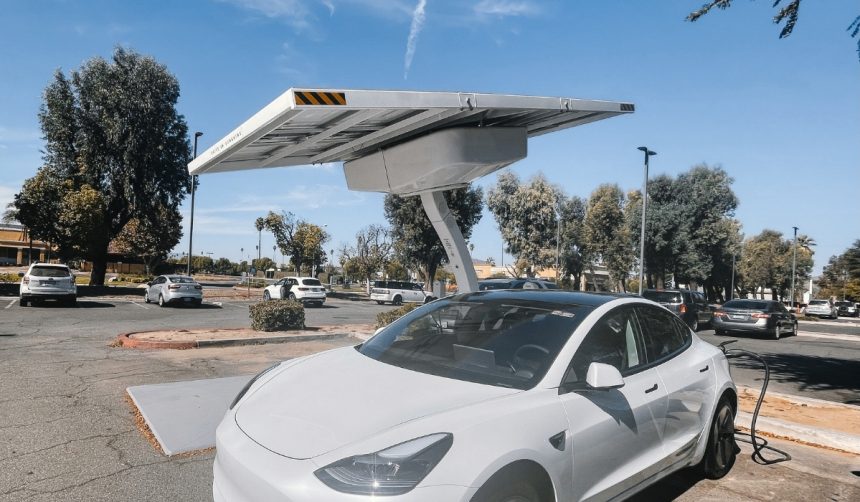Tesla’s persistent innovation streak continues to draw attention from financial analysts and investors, as its stock price experiences a notable rise. Meanwhile, speculation emerges about the automaker’s potential entry into electric vertical takeoff and landing (eVTOL) aircraft and the challenge of producing more affordable electric cars. Amidst growing competition from Chinese automakers, Tesla faces decisions that could shape not only its portfolio, but also its role in the rapidly developing fields of electric mobility and robotics. As shifting market dynamics and policy changes approach, participants in the automotive sector watch carefully for any move from Tesla to diversify further beyond electric vehicles.
Threads about Tesla’s possible move into aviation, particularly the eVTOL segment, have surfaced before, but recent statements take on additional weight, considering past years’ hesitance. While rumors have circulated about electric aircraft designs and Tesla’s passing interest, detailed commitments have yet to materialize. The company’s increased focus on artificial intelligence, robotics — highlighted by projects like Tesla Optimus — and manufacturing efficiency lends new context, especially as the landscape for affordable EVs evolves and rivals such as BYD step up exports. Market watchers often compare Tesla’s global strategies, particularly the balancing act between high innovation and mass-market accessibility seen in previously discussed product roadmaps.
Could Tesla Move Into the eVTOL Industry?
Questions regarding Tesla’s entry into the eVTOL field were revived after Morgan Stanley analyst Adam Jonas shared insights suggesting the idea remains plausible from an investor’s standpoint. Elon Musk responded to queries on the issue by indicating that Tesla is currently “stretched pretty thin,” without completely dismissing the prospect. This nuanced response leaves open the possibility for future exploration, should company resources allow. Musk’s comments have yet to signal a concrete plan for aviation products, but have not eliminated the notion outright.
“In our opinion, that’s a decidedly different type of answer. Is Tesla an aviation/defense-tech company in auto/consumer clothing?”
How Is Tesla Competing Against Chinese Automakers?
Tesla’s role in helping the United States match China’s advances in electric mobility and robotics has been highlighted in recent analyses. The company’s expertise in manufacturing, data handling, supply chains, and AI are seen as critical as both nations strive for leadership in embodied AI. Competition remains intense, especially as Chinese brands such as BYD launch aggressively priced EVs like the Seagull, pushing industry standards for affordability and technology integration. Tesla’s capacity to maintain technological leadership and cost-effectiveness is now under greater scrutiny, with global market share and innovation at stake.
What Are the Prospects for Affordable Tesla Models?
Tesla has signaled plans to release lower-cost models soon, which may expand the brand’s accessibility and presence in cost-sensitive markets. With the $7,500 federal tax credit set to expire by the end of 2024, pricing pressure intensifies, especially as Chinese competitors offer comparable EVs at under $10,000 in some cases. Musk reiterated during a recent earnings call the objective to keep model pricing close to $30,000, especially with the help of incentives. Price remains a decisive factor in Tesla’s strategy to address a wider segment of the car-buying public, as economic policy and competitive benchmarks evolve.
The possibility of Tesla developing aviation products, including eVTOLs, suggests potential diversification, yet present indications point to a stronger focus on autonomy, AI, and new vehicle segments rather than immediate entry into aircraft. Rivals like BYD, with products such as the Seagull, provide aggressive competition through lower pricing strategies and fast-paced product cycles. For investors and industry analysts, Tesla’s next move is influenced not only by its technological capabilities, but also by shifting market incentives, regulatory frameworks, and the evolving landscape of global EV manufacturing. Awareness of tax incentives’ expiration timelines and the rise of low-cost competitors is essential for consumers evaluating future purchases. As electrification broadens to include personal mobility, drones, robots, and possibly aircraft, a clear understanding of market drivers, policy shifts, and company priorities helps guide both investment and purchasing decisions.










